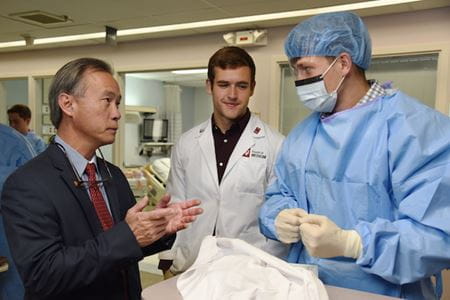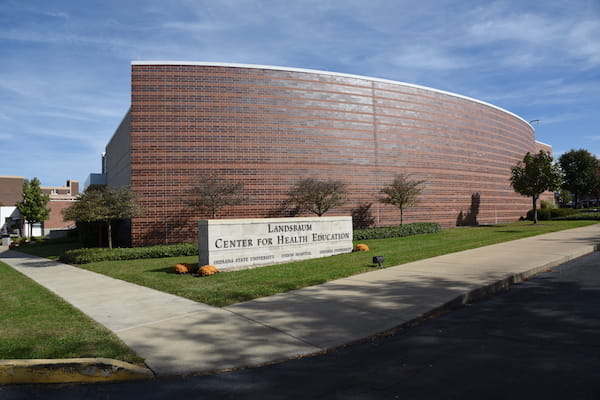“I thought pediatricians were the coolest people in the world,” she recalled.
Eckrote will soon graduate from Indiana University School of Medicine-Terre Haute, and she is finishing out her final year of medical school in a clerkship with her childhood pediatricians, Kevin Reyburn, MD, and Jerrod Feldman, MD.
“This is where my interest in pediatrics got its start, so to finish my rotations in med school with them has been a nice bookend,” said Eckrote, who will stay with IU after graduation to train in the Triple Board Residency program as a triple-certified specialist in pediatrics, psychiatry and child/adolescent psychiatry.
Throughout Eckrote’s four years of medical school on the Terre Haute campus, her education has focused on rural health. She wanted to continue with IU for residency because she intends to practice in Indiana, filling a need for more physicians in rural areas.
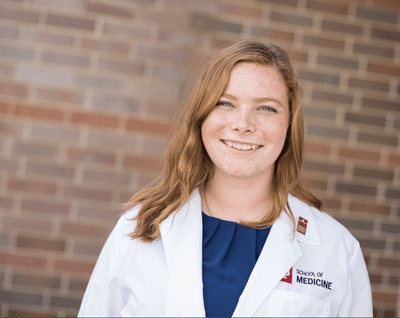 “Knowing I want to come back to practice in a rural community close to home, it’s really important for me to become a master of the resources IU has to offer, especially in mental health care services,” she said.
“Knowing I want to come back to practice in a rural community close to home, it’s really important for me to become a master of the resources IU has to offer, especially in mental health care services,” she said.
Eckrote’s path aligns perfectly with what the founders of IU’s statewide system of medical education envisioned 50 years ago. That’s when the first eight IU medical students came to Terre Haute to start their educational journey on the campus of Indiana State University in 1971. The idea was to train new physicians on regional campuses throughout the state and keep them there to practice. And it’s working.
Observing the life of a rural physician
Taihung “Peter” Duong, PhD, associate dean and director of IU School of Medicine-Terre Haute, encourages all students in the Rural Medical Education Program to do a rotation with their hometown doctor.
“We want them to see the life of the rural physician,” Duong said.
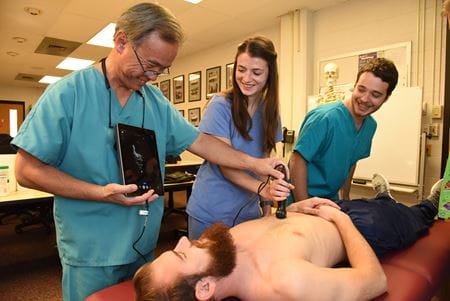 That often involves wearing many hats, being available after hours and sometimes driving to where patients are. Right from the start of their first year, rural health students are assigned to a physician who will expose them to the foundations of clinical practice in a rural setting.
That often involves wearing many hats, being available after hours and sometimes driving to where patients are. Right from the start of their first year, rural health students are assigned to a physician who will expose them to the foundations of clinical practice in a rural setting.
“They spend Tuesday afternoons with that physician, and they do that for about two years,” Duong explained.
About two-thirds of the medical students in Terre Haute are on the rural health track—unique to this regional campus.
“I applied to the rural health program because I am from a small town in southwest Indiana and felt this program will set me up for my future career as a physician in the community,” said fourth-year student Colton Junod.
After graduation, he will continue training with IU School of Medicine as a resident in Emergency Medicine. He was greatly influenced by the physicians he trained under at rural Critical Access Hospitals, and he envisions returning to southwest Indiana to practice.
“From advocacy work to sponsoring Little League baseball teams, community physicians are pillars in their communities,” he observed. “You end up treating your neighbors, seeing patients at the grocery store, and becoming a special part of your patients’ lives.”
 Classmate Brycen Ratcliffe is heading to the University of Missouri for five years of general surgery training but plans to come back to practice in a rural Indiana community. He was inspired by Camilo Santiago, MD, a surgeon at IU Health Paoli Hospital, a Critical Access Hospital serving south central Indiana.
Classmate Brycen Ratcliffe is heading to the University of Missouri for five years of general surgery training but plans to come back to practice in a rural Indiana community. He was inspired by Camilo Santiago, MD, a surgeon at IU Health Paoli Hospital, a Critical Access Hospital serving south central Indiana.
“I really loved how Dr. Santiago knew each patient very well and was able to excel in that environment,” Ratcliffe said. “I would love to have a career in a similar situation and impact the community like he does.”
Ratcliffe’s hands-on experiences in surgery were enriched as a regional campus learner because medical students get direct, one-on-one access to attending physicians and frequently participate in procedures.
“I was not only able to see the benefits we could have on someone within a few hours, but I was actually the one who was suturing the wound closed, helping cut or retract or remove whatever was ailing them,” Ratcliffe said. “The responsibility you get at a regional campus is unparalleled.”
Learning through community service
Many Terre Haute students gain early clinical experience by volunteering at the Mollie Wheat Memorial Clinic, where they interact with community patients and work with volunteering physicians to provide no-cost medical care, preventative screenings and chronic disease education to medically underserved and uninsured populations. The clinic’s name honors the mother of John Wheat, MD, a 2013 IU School of Medicine-Terre Haute graduate who helped start the clinic.
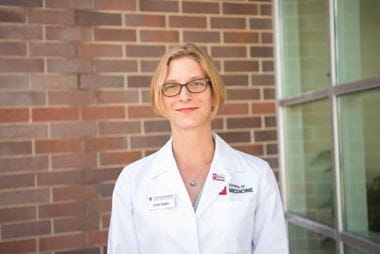 “I love the clinic! I love what it represents and how it helps our community and how it helps our students,” said third-year medical student Sarah Hopfer, clinic chair. “Sitting down and studying 14 hours a day is sometimes necessary, but it’s really hard for me. I learn best in a clinical environment.”
“I love the clinic! I love what it represents and how it helps our community and how it helps our students,” said third-year medical student Sarah Hopfer, clinic chair. “Sitting down and studying 14 hours a day is sometimes necessary, but it’s really hard for me. I learn best in a clinical environment.”
She began volunteering at the Saturday clinic as soon as she became eligible her first year of medical school. Hopfer found it improved her mental health to be connected to the community.
“To be involved in my community in this way is really about living my best life and giving something back to the community that supports us,” she said.
Duong said local physicians regularly tell him how impressed they are with the professionalism of the students who manage the free clinic. Every year since it opened in 2014, students have added a new component like Women’s Health Day, Men’s Health Day and Mental Wellness Day. This year, they initiated a children’s vaccination program—putting to use skills they learned when medical students were trained to administer COVID-19 vaccines.
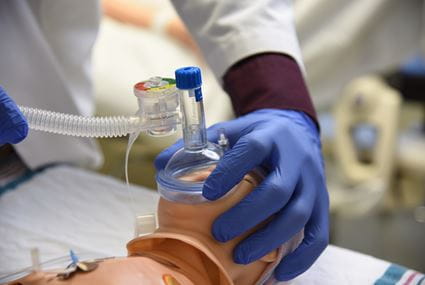 A major asset of the Terre Haute campus is the Rural Health Innovation Collaborative (RHIC) and its state-of-the art simulation center, where health care professionals and students can learn and practice technical skills. Opened in 2011, the RHIC Simulation Center is a public-private collaboration involving several academic institutions, local health systems and government agencies.
A major asset of the Terre Haute campus is the Rural Health Innovation Collaborative (RHIC) and its state-of-the art simulation center, where health care professionals and students can learn and practice technical skills. Opened in 2011, the RHIC Simulation Center is a public-private collaboration involving several academic institutions, local health systems and government agencies.
“We've learned everything there from basic procedures like giving intramuscular injections to delivering babies with their birthing mannequin,” Hopfer said. “It's such a valuable resource, and the staff there are so helpful. We're really lucky to have them!”
Students in Terre Haute are also advocacy minded. Hopfer was involved in writing four resolutions for the Indiana State Medical Association that went on to the Indiana General Assembly.
“The current graduating class has blown me away,” Duong said. “This year alone they passed 14 resolutions. One student noticed helicopter service for emergency medical services needed standardization because a difference in resources may make the difference between life and death. They were willing to take it to the state level.”
Having ‘people in your corner who care’
Studying on a regional campus allows students to personalize their educational experiences.
“The teaching faculty are phenomenal, and the support staff is out of this world. Our lead advisor, Ashley Holt, has perfect organization skills, and she makes sure we are all on track,” Eckrote said. “Everyone works so hard to make sure we are taken care of—that we’re fed and doing OK mentally, emotionally and physically.”
 Every student in Terre Haute gets to know their campus dean right away because Duong teaches first-year human anatomy.
Every student in Terre Haute gets to know their campus dean right away because Duong teaches first-year human anatomy.
“Seeing him almost every day during first year of medical school was amazing,” Eckrote said. “He knew what we were struggling with. As a medical student in Terre Haute, it feels like you have people in your corner who care for you.”
Duong knows his students’ interests, so he keeps an eye out for special opportunities for them. He arranged for Eckrote to speak on a panel at a rural health conference, and he helped Ratcliffe get into advanced life support classes at the hospital.
“I know I am not alone when I say he always has time to discuss our career plans and catch up with each student no matter where they are in their training,” said Ratcliffe, who volunteered with the Otter Creek Fire Department as a firefighter/EMT throughout his time as a medical student in Terre Haute.
With a class size of 24, all faces at the campus are familiar.
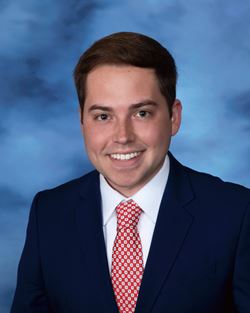 “I have loved being a part of a small class,” said Junod, who served as the Terre Haute class representative to Medical Student Council. “I often feel bad referring to my colleagues as ‘classmates’ because they have truly become my best friends and practically family.”
“I have loved being a part of a small class,” said Junod, who served as the Terre Haute class representative to Medical Student Council. “I often feel bad referring to my colleagues as ‘classmates’ because they have truly become my best friends and practically family.”
Although most medical students on the Terre Haute campus arrived there by choice, others may be assigned to the regional campus their first year. Eckrote’s message to those students is this:
“Know you’re going to have the best, most individualized experience you could possibly ask for, and you will be with people who are going to do everything they can to make sure you succeed.”
About this series
Indiana University School of Medicine is commemorating the 50th anniversary of its statewide system for medical education, established by the Indiana State Legislature in 1971. This series highlights the unique history of each regional campus and celebrates its distinctive learning environment and special programs.
Learn more about the history of IU School of Medicine-Terre Haute and its leaders’ vision for training the next generation of rural physicians.
